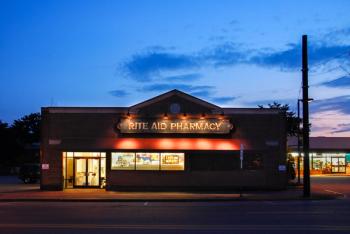
Expert Says Release of the Johnson & Johnson Single-Dose COVID-19 Vaccine ‘Will Change the Conversation’
Key Takeaways
- Johnson & Johnson's single-dose vaccine simplifies administration and enables mobile clinics, addressing logistical challenges of two-dose vaccines.
- AstraZeneca and Novavax vaccines are still in U.S. trials, with efficacy comparisons complicated by differing trial conditions.
There are 3 more COVID-19 vaccines that are expected to become available in the United States in the coming months from AstraZeneca, Johnson & Johnson, and Novavax, with specific implications for each one.
Although the Pfizer and Moderna coronavirus disease 2019 (COVID-19) vaccines have already received emergency use authorizations (EUAs) from the FDA, there are 3 other COVID-19 vaccines that are expected to become available in the United States in the coming months from AstraZeneca, Johnson & Johnson, and Novavax, according to Amesh Adalja, MD, FIDSA, senior scholar at the Johns Hopkins University Center for health security. Adalja discussed the implications of these new vaccines during a session at the Society for Advancing Business Editing and Writing Healthcare 2021 virtual symposium.
Adalja explained that the Johnson & Johnson COVID-19 vaccine is likely to be the next vaccine to receive an EUA, with the authorization probably coming through in late winter or early spring, if everything goes according to plan.
Once this vaccine option enters the market, it will also bring with it some additional benefits to the administration process that will change the conversation in relation to some of the current problems being experienced around the organization and administration of the second dose requirement of the Moderna and Pfizer vaccines, as the Johnson & Johnson vaccine is a single-dose vaccine, according to Adalja.
Due to it being a single-dose vaccine, there will be a greater ease in administration in relation to scheduling and administering a second dose. For this reason, the arrival of the single-dose option also creates the opportunity for mobile clinics that could arrive in communities for mass vaccinations of neighborhoods, rather than requiring people to come to a vaccination site. However, these type of mobile vaccination clinics would only become possible with the arrival of a single-dose vaccine option, Adalja noted.
“A Johnson & Johnson vaccine is a single-dose vaccine, doesn’t require cold-chain logistics, you don’t have to sit there for 15 minutes—that’s something you can do much quicker,” Adalja said. “You can bring it closer to patients, so you can basically have mobile [clinics] pull up in someone’s neighborhood and everybody can go outside and get vaccinated. So, things will be much more rapid in the summer than we are in the winter during this period of time where there’s limited numbers [and] they’re still fussing over priority groups.”
On the other hand, the AstraZeneca vaccine, which is currently available in the United Kingdom and other parts of the world, is still under investigation in a phase 3 trial in the United States. Adalja explained that in this trial, there are currently some issues around what dose to use, making the trial an important step before authorization.
The same is true of the Novavax COVID-19 vaccine, which uses a different technology than the other COVID-19 vaccines currently available. Although it is currently going through the UK regulatory process, it hasn’t yet started to submit for an EUA in the United States, according to Adalja.
“I think eventually we’ll probably have Pfizer, Moderna, Johnson & Johnson, Novavax, and AstraZeneca as sort of our portfolio of first-generation vaccines. Down the road, maybe in several months to a year, we may have second-generation vaccines that are a little bit different. We know companies like Sanofi are using some of their flu technologies to make vaccines, so there may be other things that come out later on, but that group of 5 will likely be what most people get their first COVID vaccination with,” Adalja said during the session.
However, Adalja explained that comparing the efficacy of each of the 5 vaccines to one another is difficult since the trials were conducted against a placebo and not each other. For this reason, it’s impossible to determine the efficacy of one vaccine over another unless they were studied in a controlled manner against each other.
“There are many differences in trial populations, in trial inclusion and exclusion criteria. But what I would say is if you look at Pfizer and Moderna, they both use mRNA, or messenger RNA, technology, and they’re very, very similar,” Adalja said. “They’re both 2-dose regimens, spaced 3 or 4 weeks apart, and they did show high efficacy at 90% and 95% against preventing symptomatic disease, and extremely high activity against severe disease, hospitalization, and death.”
Adalja noted that although the technology of the Johnson & Johnson, Novavax, and AstraZeneca vaccines is different from the Pfizer and Moderna vaccines, they all seem to have a very high efficacy as well.
Yet, there still remains the question regarding the efficacy of all 5 of these vaccines against the emerging COVID-19 variants.
“The UK variant, or the 117 variant, which has hundreds of confirmed cases in the US, and particularly in Florida—that one it seems all of the vaccines are robust against. [The variant] transmits more efficiently, but the vaccines seem to be able to take care of it,” Adalja said.
However, there is some concern with the South African variant, which is variant 135. The Novavax, AstraZeneca, and Johnson & Johnson vaccines have been demonstrated to have decreased efficacy in preventing symptomatic disease against that variant, Adalja explained.
However, the efficacy of the Moderna and Pfizer vaccines against variant 135 remains uncertain, although there are data regarding an increase in the neutralization antibody titer, meaning the vaccine wasn’t as potent against variant 135 as it was against the original variant.
Yet, Adalja noted that the goal of the vaccines is not complete prevention, but rather the prevention of symptomatic disease, and specifically severe disease activity.
“Remember, when we’re talking about COVID vaccines, the goal is to prevent severe disease, hospitalization, and death. And these vaccines look good in the face of the South African variant,” Adalja said.
Adalja explained that in this way, the goal of vaccination is to tame the disease, not to eliminate it because that will not be possible.
“I think there is this misconception in the press and maybe in the general public that we’re somehow going to get to COVID-19 zero. That’s not possible. This is an efficiently spreading respiratory virus that comes from a family of viruses that are endemic. So, this is going to be a seasonal coronavirus. It’s not going to disappear magically—it’s not smallpox, it’s irradicable,” Adalja said.
Although the vaccines will not get us to a point of elimination, COVID-19 will stop being as worrisome once much of the public is vaccinated. At this point, the virus will no longer affect populations en masse and threaten the treatment capacity of hospitals.
For this reason, Adalja emphasized that it was important for health care professionals and the media to explain to the public that upon vaccination, patients do become safe from the real risks of COVID-19, which are severe disease, hospitalization, and death.
Continuing to warn patients about the potential of still being able to spread the disease is, for this reason, unhelpful in light of this goal, since there should exist an incentive for the public to want to get vaccinated and no longer need to remain in quarantine. If the public feels like they will be shamed for going out to eat or trying to live their lives more normally after they are vaccinated, this may disincentivize vaccine uptake among the general public.
“The vaccine is supposed to enhance your life,” Adalja said. “You’re supposed to have some improvement in your life. That’s why we want people to get the vaccine. But if it doesn’t, then people aren’t going to get it.”
For this reason, Adalja explained that optimism in relation to the success of the vaccines is critical, in order to propagate the understanding that vaccination leads to a marked improvement in quality of life, rather than a continuation of what has become the COVID-19 “new normal.”
REFERENCE
Adalja A, Abutaleb Y. Vaccine and therapeutics development: Where are we? What’s available? What’s been distributed? What’s in the pipeline? Presented at: Society for Advancing Business Editing and Writing Healthcare 2021; February 8, 2021. Accessed February 8, 2021.
Newsletter
Stay informed on drug updates, treatment guidelines, and pharmacy practice trends—subscribe to Pharmacy Times for weekly clinical insights.




















































































































































































































